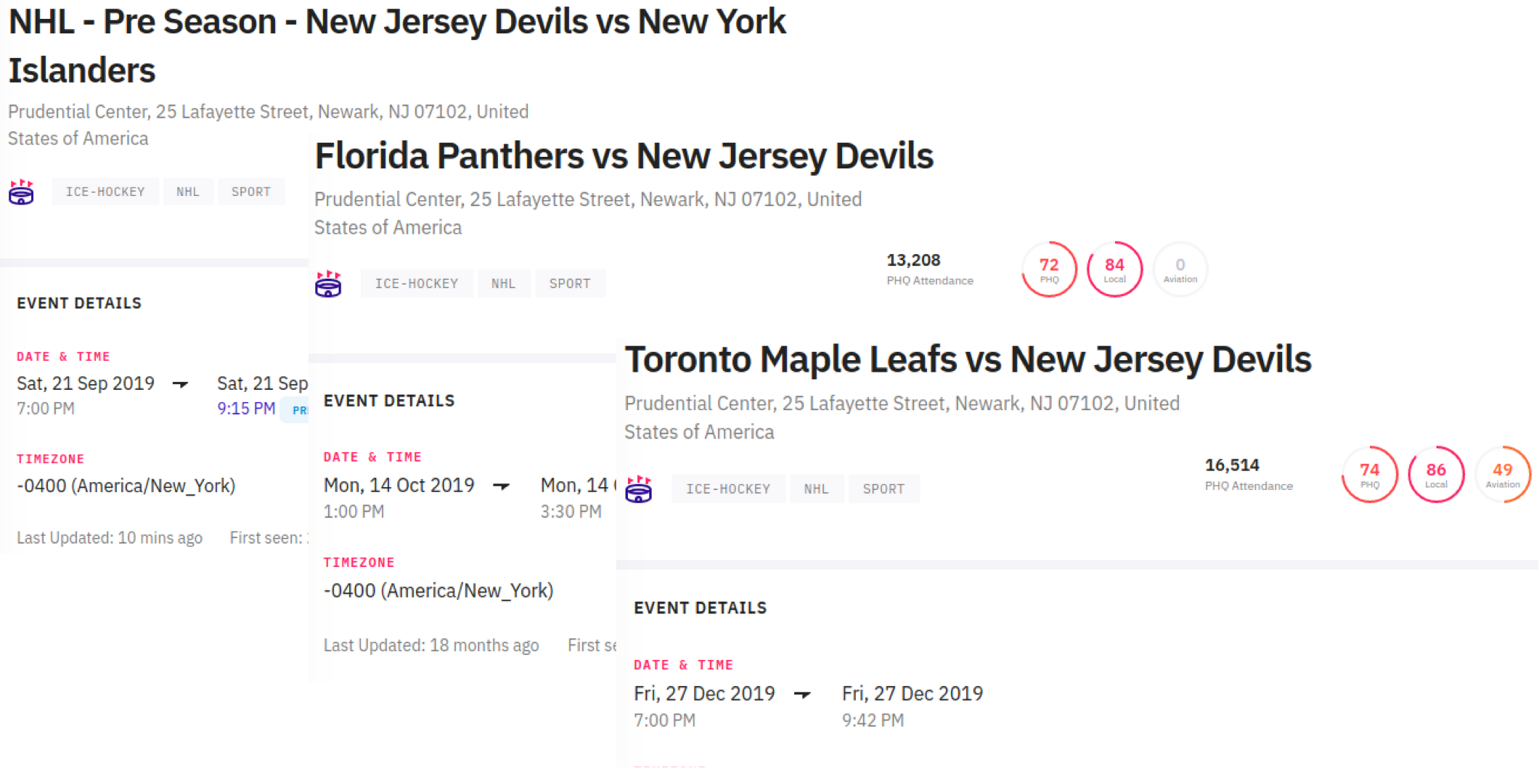How NHL games drive demand down by 50% for a national pizza chain

How pro hockey games drove demand down by 50% for a national pizza chain
It’s critical for pizza restaurants and other QSRs to stay on top of any factors that could impact their revenue. One of those factors is the occurrence of events – whether it’s a sports game or a concert.
We recently worked with a national pizza company to understand the relationship between events and their stores. In order to understand the catalyst behind demand fluctuations at the store level, the pizza shop’s operational team used PredictHQ's Demand Analysis Tool which reveals the events that drive demand for restaurants, retailers, and more.
This tool enables businesses to unlock insights into their customers' behavior during events that can impact demand. In this case, they performed a demand analysis for one of their locations in New Jersey and the results revealed a pattern of a 50% drop in demand for the popular pizza shop when the New Jersey Devils were playing at the Prudential Center, about two miles away from the restaurant.

In the chart, the blue line represents actual demand, which is the observed level of demand for a particular day. The red line represents the baseline demand, or the usual level of demand the pizza shop would see under normal circumstances. The green line represents the remainder, which is the demand outside what we expect from normal patterns and seasonality. This can be caused by events and other factors such as promotional campaigns.
The three vertical orange bands highlight the periods where demand dropped by 50%, which happens to coincide with the occurrence of three home games for the New Jersey Devils hockey team.

Armed with this insight, operators at the pizza shop were able to adjust their staffing and inventory levels in preparation for lower demand during future Devils games.
Why the game impacted demand in this way
The massive drop in demand could be explained by the hockey game within such close proximity drawing potential customers away from the pizza chain location. During home games at the Prudential Center, it’s possible that locals tend to congregate, eat, and drink there – when they otherwise may have ordered pizza, or ordered from other restaurants in the area.
Another possible explanation for the nosedive in demand could have to do with increased traffic within the area during game days – which could be a deterrent for customers who normally wouldn’t mind heading to the pizza shop location.
Predict and prepare for low demand
Demand Analysis combines and correlates intelligent event data with your transactional demand data, saving your data science team months of work. The data is aggregated at scale so you can review a high volume of days with significantly higher and lower-than-usual levels of demand – and quickly identify consistent correlations between demand, and specific types of events.
With a deeper understanding of the types of events that drive demand up and down for your business, you too can better prepare for the demand fluctuations these events typically bring. For example, if you know in advance that demand will be lower or higher on one particular day, you can ensure your business remains profitable by taking the following steps:
Right-size staffing: During major events that draw business away from your restaurant, reduce staffing levels by cutting employee hours, or scheduling fewer employees during slow periods to prevent costly overstaffing. And of course vice versa if you are expecting significantly more demand than usual.
Optimize inventory: Reduce waste by taking stock of your inventory and adjusting orders as needed to avoid being overstocked or understocked during incoming periods of low or high demand.
Offer game day promotions: Offer discounts on menu items or free add-ons with certain orders during game days and other slow periods to encourage customers to order.
Expand your delivery radius: Consider expanding your delivery radius to reach more customers, which may require additional marketing efforts to promote your business to customers who are further away.
Quick serve restaurants of all kinds can significantly save on operating costs, prevent food wastage, and avoid unnecessary employee expenses such as overtime pay by aligning these elements with local levels of demand. Inflation, labor shortages, and supply chain challenges plaguing today’s business landscape make it business-critical to ensure planning is in line with real-world demand – as even slight fluctuations in demand can have a significant impact on the bottom line.






